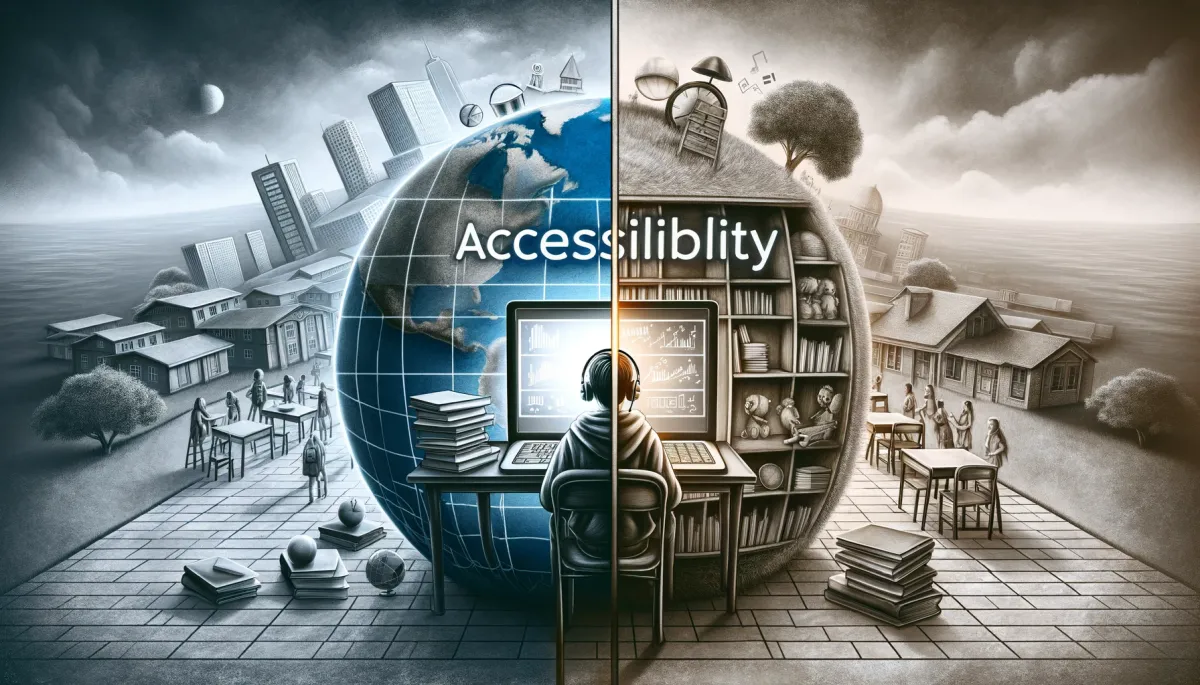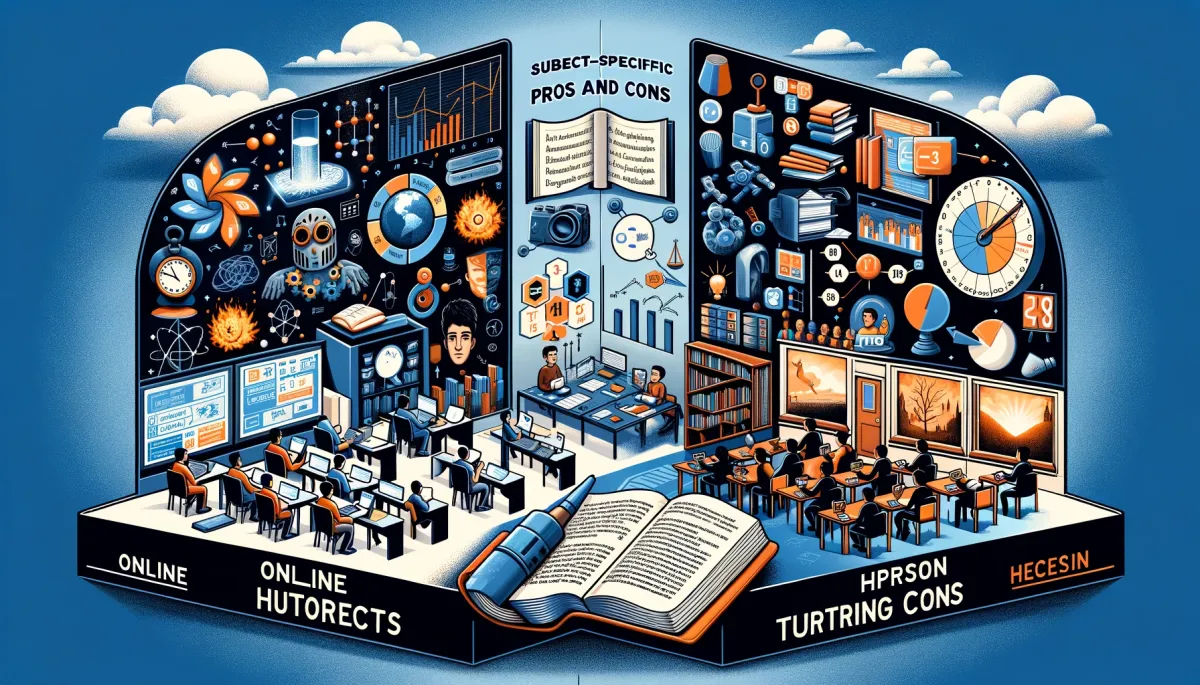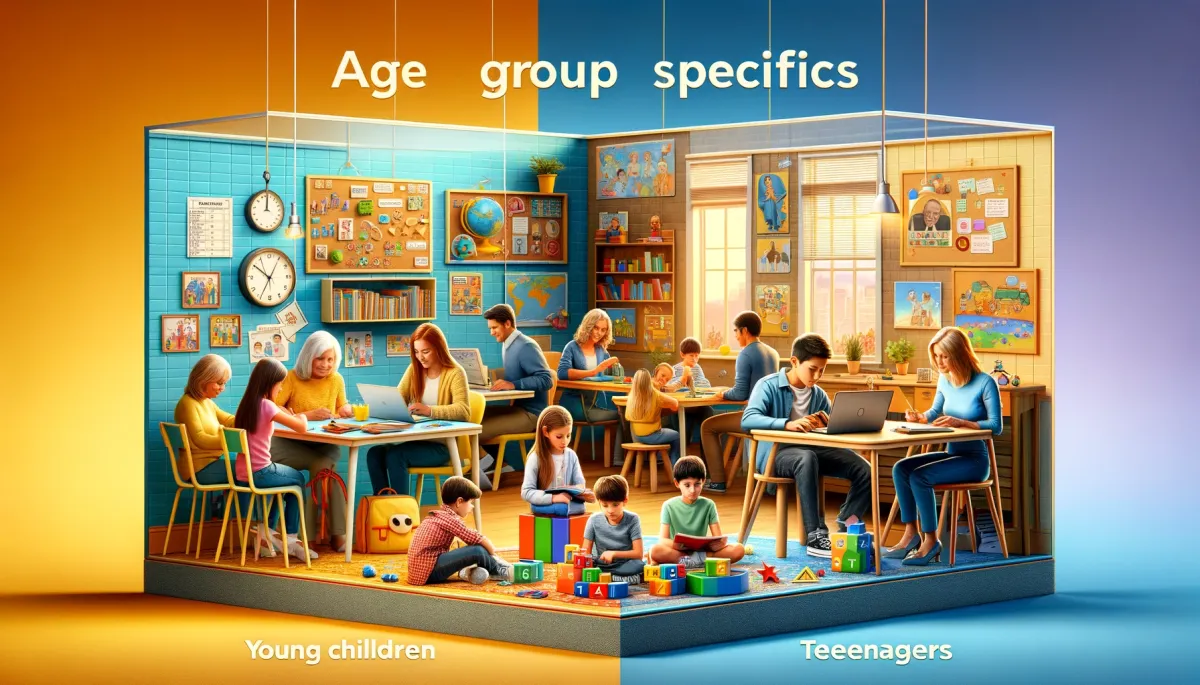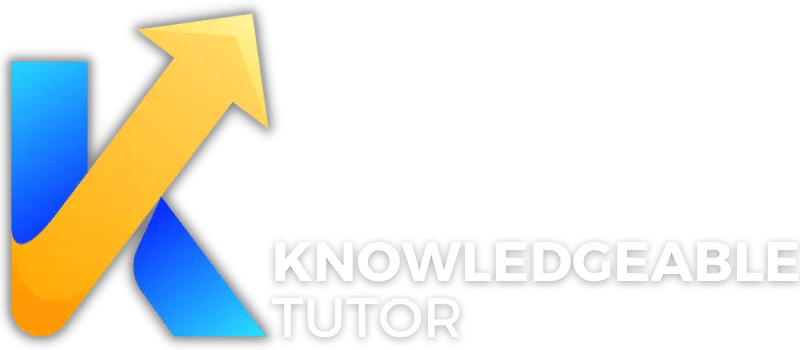Online Tutoring Vs. In-person Tutoring: Pros and Cons

Fanie Naude
CEO & Founder of Knowledgeable Tutor, Buznet Direct, YMC & Naude Consulting

Fanie Naude
CEO & Founder of Knowledgeable Tutor, Buznet Direct, YMC & Naude Consulting

Introduction: The Digital Revolution in Tutoring
The 21st century has been a period of unprecedented technological advancements, and the field of education is no exception. The rise of online tutoring has been meteoric, especially in the wake of the COVID-19 pandemic. While traditional in-person tutoring has its merits, online tutoring has emerged as a formidable alternative, offering a plethora of benefits that were once unimaginable. But the question remains: Which is better—online or in-person tutoring?
The answer is not straightforward. Both methods have their pros and cons, and the best choice often depends on various factors such as the student's needs, the subject matter, and even the tutor's expertise. This article aims to provide an exhaustive comparison between online and in-person tutoring, diving deep into the economics, quality of education, convenience, and much more.
"The function of education is to teach one to think intensively and to think critically. Intelligence plus character—that is the goal of true education." - Martin Luther King Jr.

The Economics of Tutoring: A Comparative Analysis
When it comes to tutoring, one of the first things that come to mind is the cost. Both online and in-person tutoring come with their own set of financial considerations, and understanding these is crucial for making an informed decision.
Cost Comparison Between Online and In-person Tutoring
Online tutoring often appears to be the cheaper option at first glance. The absence of travel expenses for both the tutor and the student can significantly reduce costs. Additionally, online platforms frequently offer package deals, further driving down the price per session. According to a study by Preply, the average cost of an online tutoring session ranges from $18 to $25 per hour.
In contrast, in-person tutoring usually involves additional costs such as travel expenses, and the hourly rates can be higher due to the hands-on nature of the sessions. Rates for in-person tutoring can vary widely but often range from $30 to $50 per hour, as indicated by a report from Learn To Be.
| Tutoring Method | Average Cost per Hour |
|---|---|
| Online | $18 - $25 |
| In-person | $30 - $50 |
Hidden Costs in Both Methods
While online tutoring may seem more cost-effective, there are hidden costs to consider. For instance, a stable internet connection and specific software or hardware may be required, adding to the overall expenditure.
In-person tutoring also has its share of hidden costs. Apart from travel expenses, materials such as textbooks or specialized equipment for subjects like music or art can add up.
In summary, while online tutoring may generally be more affordable, the actual costs can vary based on several factors. Therefore, a thorough understanding of all potential expenses is essential for making a cost-effective choice.
"An investment in knowledge pays the best interest." - Benjamin Franklin
By delving into the economics of tutoring, we aim to provide you with a comprehensive understanding of the financial aspects involved in both online and in-person tutoring. This knowledge will serve as a foundation for the subsequent sections, where we will explore other critical factors like convenience, quality of education, and technology requirements.
Stay tuned as we unravel the complexities of choosing the right tutoring method for you or your child.

Convenience Factor: The Battle Between Flexibility and Limitations
In today's fast-paced world, convenience is not just a luxury; it's a necessity. The ability to adapt to various schedules and locations can make or break the tutoring experience for both the tutor and the student.
Flexibility in Scheduling
Online tutoring offers unparalleled flexibility when it comes to scheduling sessions. With the elimination of commute time, both tutors and students can easily fit sessions into their busy lives. This flexibility is particularly beneficial for students who have extracurricular activities or part-time jobs. According to a survey by WizIQ, 52% of online students cited "flexibility" as the primary reason for choosing online education.
In contrast, in-person tutoring often requires a more rigid schedule. The need to coordinate locations and travel times can make it challenging to find a convenient slot for both parties.
| Tutoring Method | Flexibility Level |
|---|---|
| Online | High |
| In-person | Moderate |
For more insights on how to manage your time effectively as a tutor, you might find our article on Effective Time Management Strategies for Online Tutors useful.
Geographical Limitations
Online tutoring breaks down geographical barriers, allowing students to connect with experts from around the world. This global reach is especially beneficial for students seeking specialized tutors who may not be available locally.
In-person tutoring, however, is confined by geography. The need for physical presence limits the pool of available tutors and may require students to settle for less-than-ideal matches.
"The world is a book, and those who do not travel read only one page." - Saint Augustine

Quality of Education: The Core of the Matter
While convenience is essential, the ultimate goal of tutoring is to enhance educational outcomes. Therefore, the quality of education is a critical factor in choosing between online and in-person tutoring.
Effectiveness in Different Subjects
Certain subjects lend themselves better to online tutoring, such as mathematics and programming, where screen sharing and real-time editing can be highly effective. On the other hand, subjects like music or physical education may require the tactile feedback that only in-person tutoring can provide.
Our article on Teaching Different Subjects: Tips and Techniques offers a deep dive into the nuances of tutoring various subjects online and in-person.
Student Engagement Levels
Engagement is a key indicator of educational effectiveness. Online tutoring platforms often come equipped with interactive tools like whiteboards, quizzes, and gamification features that can enhance student engagement. A study by the Educause Review shows that well-designed online courses can achieve engagement levels equal to or greater than traditional classrooms.
However, in-person tutoring offers the advantage of real-time, face-to-face interaction, which can be more engaging for some students, especially younger ones who may require more personalized attention.
| Tutoring Method | Engagement Tools |
|---|---|
| Online | Whiteboards, Quizzes, Gamification |
| In-person | Real-time Interaction, Physical Demonstrations |
"Education is not the filling of a pail, but the lighting of a fire." - W.B. Yeats
By examining the convenience and quality of education offered by both online and in-person tutoring, we aim to equip you with the information you need to make an informed decision. The next sections will delve into the technological requirements and accessibility issues associated with each method. Stay tuned!

Technological Requirements: The Digital Backbone of Online Tutoring
In an era where technology is intertwined with almost every aspect of our lives, understanding the technological requirements for online and in-person tutoring is crucial. This section aims to demystify the tech landscape for both tutoring methods.
Necessary Hardware and Software
For online tutoring, having the right hardware and software is non-negotiable. A computer or tablet with a good camera and microphone is essential for video conferencing. Additionally, specific software may be required for interactive learning, such as virtual whiteboards or subject-specific applications. According to a report by eLearning Industry, 67% of organizations now offer mobile learning in some form.
In-person tutoring, on the other hand, usually requires minimal technology. However, some tutors incorporate tech tools like tablets for interactive learning or software for tracking student progress.
| Tutoring Method | Hardware/Software Requirements |
|---|---|
| Online | Computer, Camera, Microphone, Specialized Software |
| In-person | Optional: Tablet, Tracking Software |
For a comprehensive guide on the tools you'll need, check out our article on Tools and Technology for Effective Online Tutoring.
Internet Speed and Reliability
A stable and fast internet connection is vital for online tutoring. Lag or disconnection can disrupt the learning experience and lead to frustration. In contrast, in-person tutoring is not affected by internet reliability, making it a more stable option in areas with poor connectivity.
"Technology will not replace great teachers but technology in the hands of great teachers can be transformational." - George Couros

Accessibility: Bridging the Gap Between Availability and Needs
Accessibility is a multifaceted issue that encompasses not just the availability of tutors but also the accommodation of special needs.
Availability of Tutors
Online tutoring opens up a world of possibilities by allowing students to connect with experts globally. This is particularly beneficial for specialized subjects or languages that may not have local experts. In contrast, the availability of in-person tutors is limited by geographical location.
Special Needs Accommodations
Online tutoring platforms are increasingly incorporating features to accommodate students with special needs, such as screen readers and speech-to-text functions. However, in-person tutoring often provides the tactile and sensory experiences that some special needs students require for effective learning.
Our article on Online Tutoring for Special Needs Students provides an in-depth look at how both methods can be adapted to meet diverse needs.
| Tutoring Method | Special Needs Accommodations |
|---|---|
| Online | Screen Readers, Speech-to-Text |
| In-person | Tactile and Sensory Experiences |
"The only disability in life is a bad attitude." - Scott Hamilton
By understanding the technological requirements and accessibility factors, you'll be better equipped to choose the tutoring method that aligns with your specific needs. The subsequent sections will delve into the nuances of personal interaction and how each method fares in emergency situations. Stay tuned for more enlightening insights!

Personal Interaction: The Human Element in Tutoring
The essence of tutoring lies not just in the transfer of knowledge but also in the personal connection between the tutor and the student. This section delves into the intricacies of personal interaction in both online and in-person tutoring.
Building Rapport with Students
In online tutoring, building rapport can be challenging due to the lack of physical presence. However, many online platforms offer interactive features like video calls and real-time chat, which can help establish a connection. A study by the International Review of Research in Open and Distributed Learning found that synchronous communication can significantly enhance the sense of community in online learning.
In-person tutoring naturally allows for a more immediate and intimate rapport, facilitated by face-to-face interaction. The ability to read body language and respond to subtle cues can make the learning experience more personalized.
| Tutoring Method | Rapport Building |
|---|---|
| Online | Video Calls, Real-time Chat |
| In-person | Face-to-face Interaction |
For more on this, our article on Building Your Online Tutoring Business: Tips and Strategies offers valuable insights.
Non-verbal Cues and Their Importance
Non-verbal cues like facial expressions and body language play a vital role in communication. While online tutoring platforms are improving their video quality to capture these cues, the experience is not yet fully comparable to in-person interaction.
"The most important thing in communication is hearing what isn't said." - Peter Drucker

Emergency Situations: When the Unexpected Happens
Life is unpredictable, and emergency situations can arise that disrupt tutoring sessions. How each method handles these disruptions can be a deciding factor for some.
How Each Method Fares in Unforeseen Circumstances
Online tutoring offers the advantage of quick rescheduling or switching to asynchronous methods like sending recorded video lessons. However, technical issues like power outages can completely halt an online session.
In-person tutoring is less susceptible to technical disruptions but can be more significantly affected by external factors like weather conditions or health emergencies.
| Tutoring Method | Handling Emergencies |
|---|---|
| Online | Quick Rescheduling, Asynchronous Methods |
| In-person | Less Tech-dependent, More External Risks |
For dealing with such challenges, you may find our article on Handling Difficult Tutoring Sessions useful.
"Expect the best, plan for the worst, and prepare to be surprised." - Denis Waitley
By understanding the nuances of personal interaction and emergency situations, you can make a more informed choice between online and in-person tutoring. The upcoming sections will explore ethical considerations and parental involvement in both methods. Stay tuned for more comprehensive insights!

Ethical Considerations: Navigating the Moral Compass in Tutoring
In the realm of education, ethical considerations are paramount. Both online and in-person tutoring come with their own sets of ethical challenges that need to be addressed.
Data Privacy Concerns
Online tutoring often involves the use of platforms that store personal information and academic records. Data privacy becomes a significant concern, especially with the increasing number of cyber-attacks. According to a report by EDUCAUSE Review, educational institutions are the third most common target of data breaches.
In-person tutoring generally involves less data storage and, therefore, poses fewer risks concerning data privacy. However, the responsibility to maintain confidentiality still exists.
| Tutoring Method | Data Privacy Concerns |
|---|---|
| Online | High (Personal Information, Academic Records) |
| In-person | Low (Limited Data Storage) |
For a deeper dive into this topic, our article on Ethical Practices in Online Tutoring provides valuable insights.
Academic Integrity
Both methods require a commitment to academic integrity, but the online format can be more susceptible to issues like plagiarism or cheating during assessments. In-person tutoring allows for more direct oversight, making it easier to maintain academic integrity.
"Real integrity is doing the right thing, knowing that nobody's going to know whether you did it or not." - Oprah Winfrey

Parental Involvement: The Third Wheel in the Tutoring Tricycle
Parental involvement can significantly impact the effectiveness of a tutoring session. Both online and in-person tutoring offer different avenues for parents to be involved.
Ease of Monitoring Sessions
Online tutoring platforms often provide features that allow parents to monitor sessions, either in real-time or through recorded sessions. In-person tutoring, on the other hand, offers the possibility of direct observation, although this can sometimes be intrusive and counterproductive.
Communication with Tutors
Online platforms usually offer built-in messaging systems that facilitate easy communication between parents and tutors. In-person tutoring often relies on traditional methods like phone calls or face-to-face meetings, which some parents may find more personal and effective.
| Tutoring Method | Parental Involvement |
|---|---|
| Online | Monitoring Features, Built-in Messaging |
| In-person | Direct Observation, Traditional Communication |
For more on this, you might find our article on Communicating Effectively with Parents of Students to be a useful resource.
"Children are apt to live up to what you believe of them." - Lady Bird Johnson
Understanding the ethical considerations and the role of parental involvement can help you make a more informed decision about which tutoring method is best for you. The subsequent sections will delve into reviews and testimonials, as well as subject-specific pros and cons. Stay tuned for more enlightening insights!

Reviews and Testimonials: The Litmus Test for Tutoring Quality
In a world awash with options, reviews and testimonials serve as the North Star guiding us through the labyrinth of choices. Both online and in-person tutoring have their mechanisms for gathering and displaying reviews, which can be a critical factor in your decision-making process.
Credibility and Social Proof
Online tutoring platforms often feature built-in review systems where students and parents can rate and review tutors. These reviews are publicly displayed, offering a form of social proof. In-person tutors may rely on word-of-mouth or written testimonials, which can be equally powerful but less accessible.
"Reputation is what other people know about you. Honor is what you know about yourself." - Lois McMaster Bujold
| Tutoring Method | Review Mechanism |
|---|---|
| Online | Built-in Review Systems, Publicly Displayed |
| In-person | Word-of-Mouth, Written Testimonials |
For more insights on this, consider reading our article on How to Ask for Reviews and Testimonials from Students.
How to Evaluate Tutor Quality
Reviews can be subjective. It's crucial to know how to sift through them to gauge a tutor's quality. Look for recurring themes in reviews, such as punctuality, subject expertise, and engagement levels. For in-depth tips on this, our guide on How to Measure Your Success as an Online Tutor can be a valuable resource.

Subject-Specific Pros and Cons
"Education is not the filling of a pail, but the lighting of a fire," said W.B. Yeats. This fire burns differently depending on the subject matter. Let's dissect how online and in-person tutoring fare across various disciplines.
STEM Subjects
Online Tutoring
- Pros: Interactive platforms enable real-time problem-solving, often replicating the classroom experience. Resources like Khan Academy have revolutionized online STEM education.
- Cons: Complex equations and formulas can sometimes be difficult to communicate through digital interfaces.
In-Person Tutoring
- Pros: Hands-on experiments and real-world applications are easier to demonstrate.
- Cons: Limited to the resources and materials available at the location.
For more insights, check out Teaching Different Subjects: Tips and Techniques.
Humanities
Online Tutoring
- Pros: Easy sharing of articles, videos, and discussion forums can enrich the learning experience.
- Cons: The lack of physical presence can sometimes hinder nuanced discussions.
In-Person Tutoring
- Pros: Easier to engage in in-depth discussions and debates.
- Cons: Limited to the books and resources physically available.
Arts and Crafts
Online Tutoring
- Pros: Access to a global network of artists and resources.
- Cons: Difficult to provide hands-on guidance.
In-Person Tutoring
- Pros: Direct, hands-on instruction and immediate feedback.
- Cons: Limited by the tutor's own range of artistic skills and available materials.
For a deeper dive into subject-specific tutoring, visit Choosing the Right Subject to Tutor Online.

Age Group Specifics
"Education is the most powerful weapon which you can use to change the world," Nelson Mandela once said. But the caliber of this weapon varies with age.
Young Children
Online Tutoring
- Pros: Gamified learning can make education fun.
- Cons: Screen time concerns and limited attention span.
In-Person Tutoring
- Pros: Easier to maintain focus and provide physical learning aids like blocks or flashcards.
- Cons: Logistical challenges, such as transportation.
For more, read Exploring Online Tutoring for Different Age Groups.
Teenagers
Online Tutoring
- Pros: Appeals to the tech-savvy nature of this age group. Platforms like Coursera offer high-school level courses.
- Cons: Potential for distractions from other online activities.
In-Person Tutoring
- Pros: Allows for mentorship and more personalized guidance.
- Cons: Teens may feel more self-conscious and less willing to make mistakes.
Adults
Online Tutoring
- Pros: Flexibility is a significant advantage, catering to their often busy schedules.
- Cons: Adults may be less comfortable with technology, affecting the learning experience.
In-Person Tutoring
- Pros: Provides a structured learning environment, which many adults prefer.
- Cons: Less flexibility in scheduling, which can be a deterrent for busy adults.
For adult-specific tutoring strategies, you might find Balancing Tutoring with Your Personal Life useful.
These subject and age-specific considerations are not just academic exercises but pivotal factors that can make or break the educational experience. Choose wisely, for as Plutarch said, "The mind is not a vessel to be filled, but a fire to be kindled."

FAQ's
Frequently Asked Questions: Navigating the Complex Terrain of Online vs. In-person Tutoring
The landscape of education is ever-evolving, and as we delve into the intricacies of online and in-person tutoring, questions naturally arise. To address these queries, we've scoured Google's "People Also Ask" section and other credible sources to provide you with a comprehensive FAQ section.
1. Is Online Tutoring as Effective as In-person Tutoring?
Both methods have their merits and drawbacks. Online tutoring offers convenience and often lower costs but may lack the personal touch that comes with in-person tutoring. In-person tutoring provides a more interactive experience but can be more expensive and less flexible. The effectiveness largely depends on the student's learning style and the tutor's expertise. For a more in-depth comparison, you can read this article.
2. What are the Hidden Costs in Online and In-person Tutoring?
In online tutoring, you may need to invest in high-quality hardware and software. In-person tutoring may involve travel costs or additional fees for materials. For a detailed breakdown, refer to our section on The Economics of Tutoring.
3. How Do I Choose Between Online and In-person Tutoring?
Consider factors like your budget, learning style, and subject matter. Some subjects may be better suited for in-person instruction, while others can be effectively taught online. For more insights, check out this discussion on Quora.
4. Are There Any Ethical Concerns with Online Tutoring?
Yes, data privacy and academic integrity are significant concerns in online tutoring. Always ensure that the platform you choose complies with data protection regulations. For more on this, visit our section on Ethical Considerations.
5. How Do I Evaluate the Quality of a Tutor?
Look for reviews and testimonials from previous students. Credibility and social proof are key indicators of a tutor's quality. For tips on this, you can read this article.

Conclusion
The Final Verdict: A Tapestry of Choices
As we reach the end of this comprehensive guide, it's evident that both online and in-person tutoring have their unique sets of advantages and challenges. The choice between the two is not a binary one but rather a spectrum of options that can be tailored to fit individual needs.
The future of tutoring is a blend of these two methods, enriched by technological advancements like AI and virtual reality. As the famous educator John Dewey once said, "Education is not preparation for life; education is life itself." Whether you choose the digital route or the traditional path, the essence of education remains the same: a lifelong journey of learning and growth.
For those still navigating this complex terrain, our comprehensive guide and FAQ section offer valuable insights to make an informed decision. The future is bright, and the possibilities are endless. Choose wisely, and may your educational journey be enriching and fulfilling.

